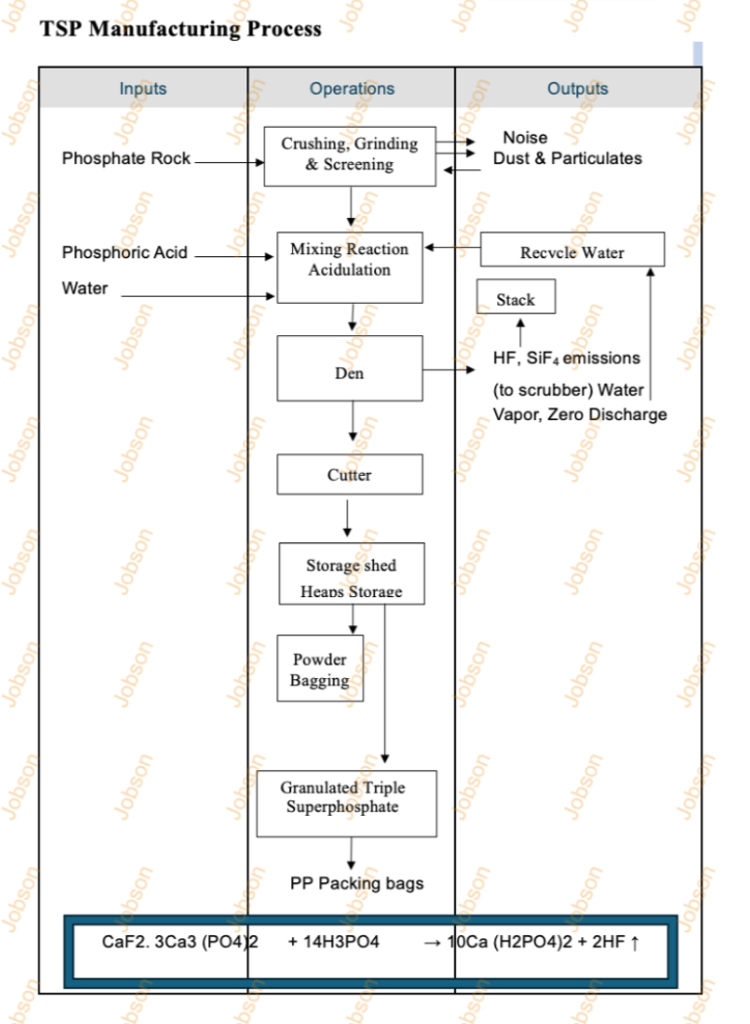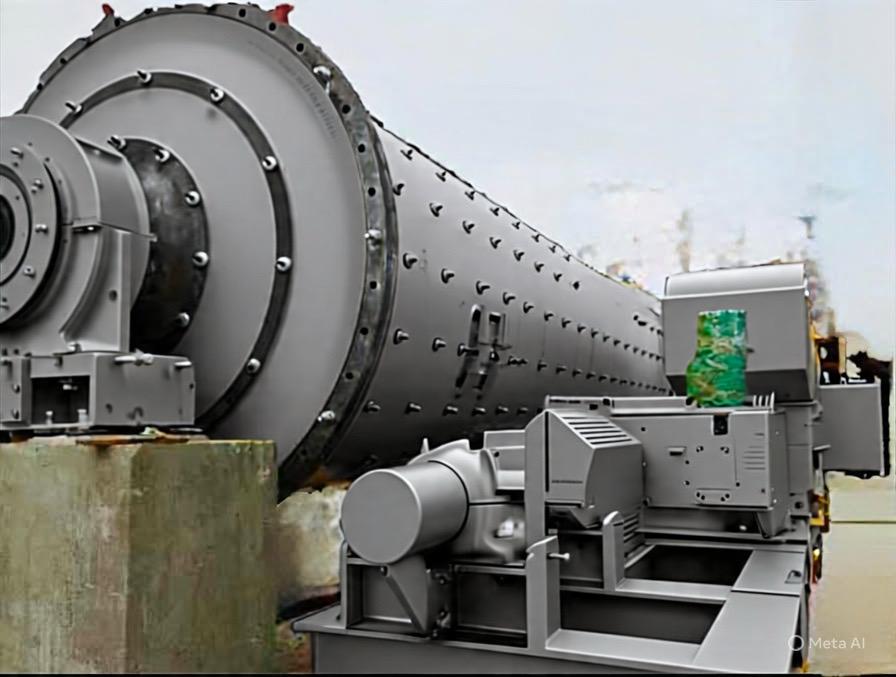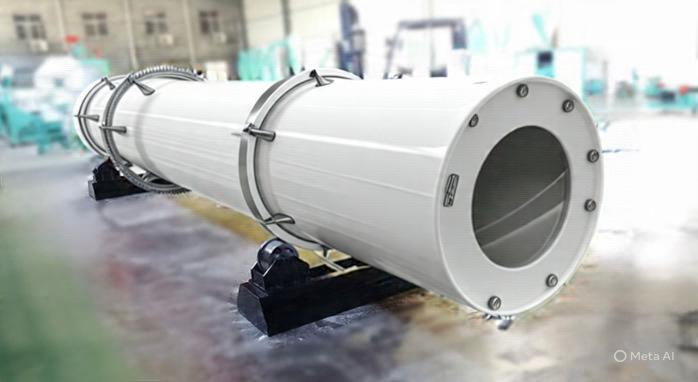TSP
Triple super phosphate is a fertilizer produced by the reaction of concentrated phosphoric acid with phosphate rock containing 45 to 55% P2O5. The method has been used to determine the optimum conditions for the production of triple super phosphate. The chosen experimental parameters and their ranges were (i) reaction time 30 to 120 minutes, (ii) phosphoric acid concentration (in weight): 45% to 60%, and (iii) reaction temperature: 90 to 100 ºC. Present SSP process can be used for TSP manufacturing. Minor change is process required
Fig below shows the block flow diagram for manufacturing of triple superphosphate. This type of fertilizers is much more concentrated than the ordinary superphosphate, containing 45- 46 % of available P2O5. Triple superphosphate is manufactured by the action of phosphoric acid on phosphate rock. The main reaction is:
CaF2. 3Ca3 (PO4)2 + 14H3PO4 ? 10Ca (H2PO4)2 + 2HF ?
(Phosphate Rock) (Triple Superphosphate)
A process similar to single superphosphate production is used, in which pulverized phosphate rock is mixed with phosphoric acid in a two-stage reactor & some part of Sulfuric acid. The resultant slurry is sprayed into the granulator. The slurry is sprayed into the drum granulation co-current with flue gases of fired fuel (natural gas or fuel oil and air). The product is screened and off-size is recycled back to the granulator. The on-size product is cooled and stored ready for being bagged. The exhaust gases from the reactor, granulator and cooler are scrubbed to remove fluoric compounds.
TSP process flow






